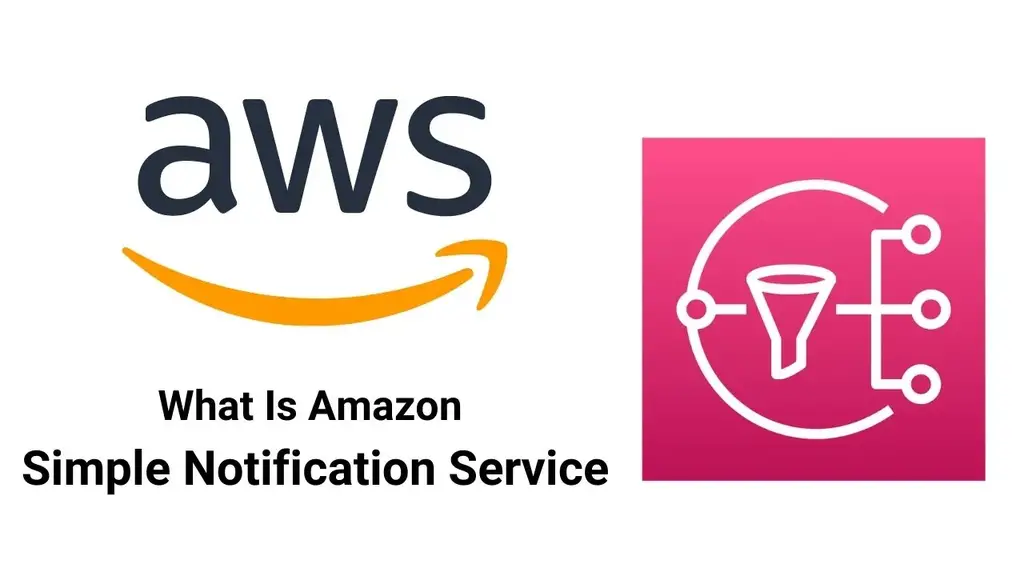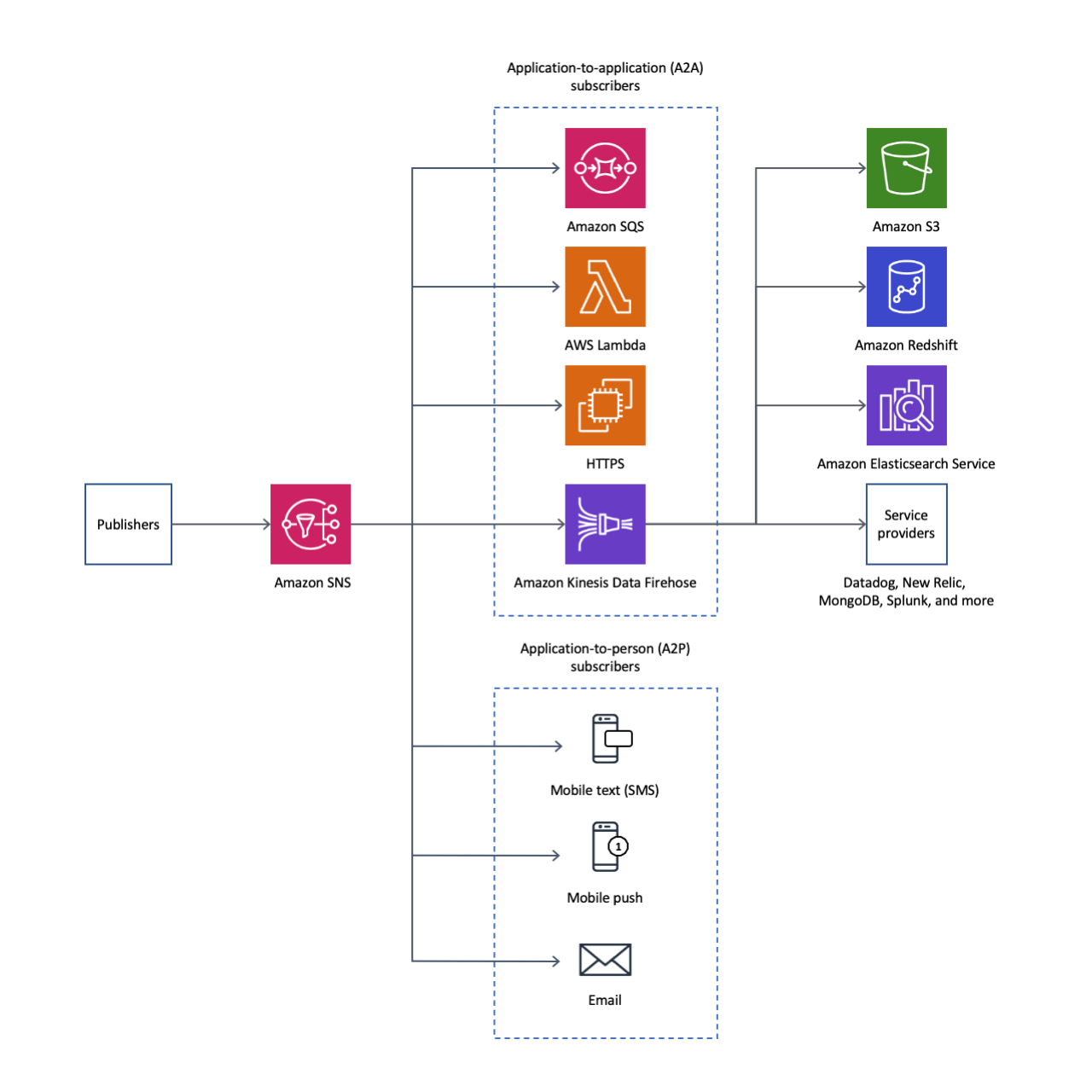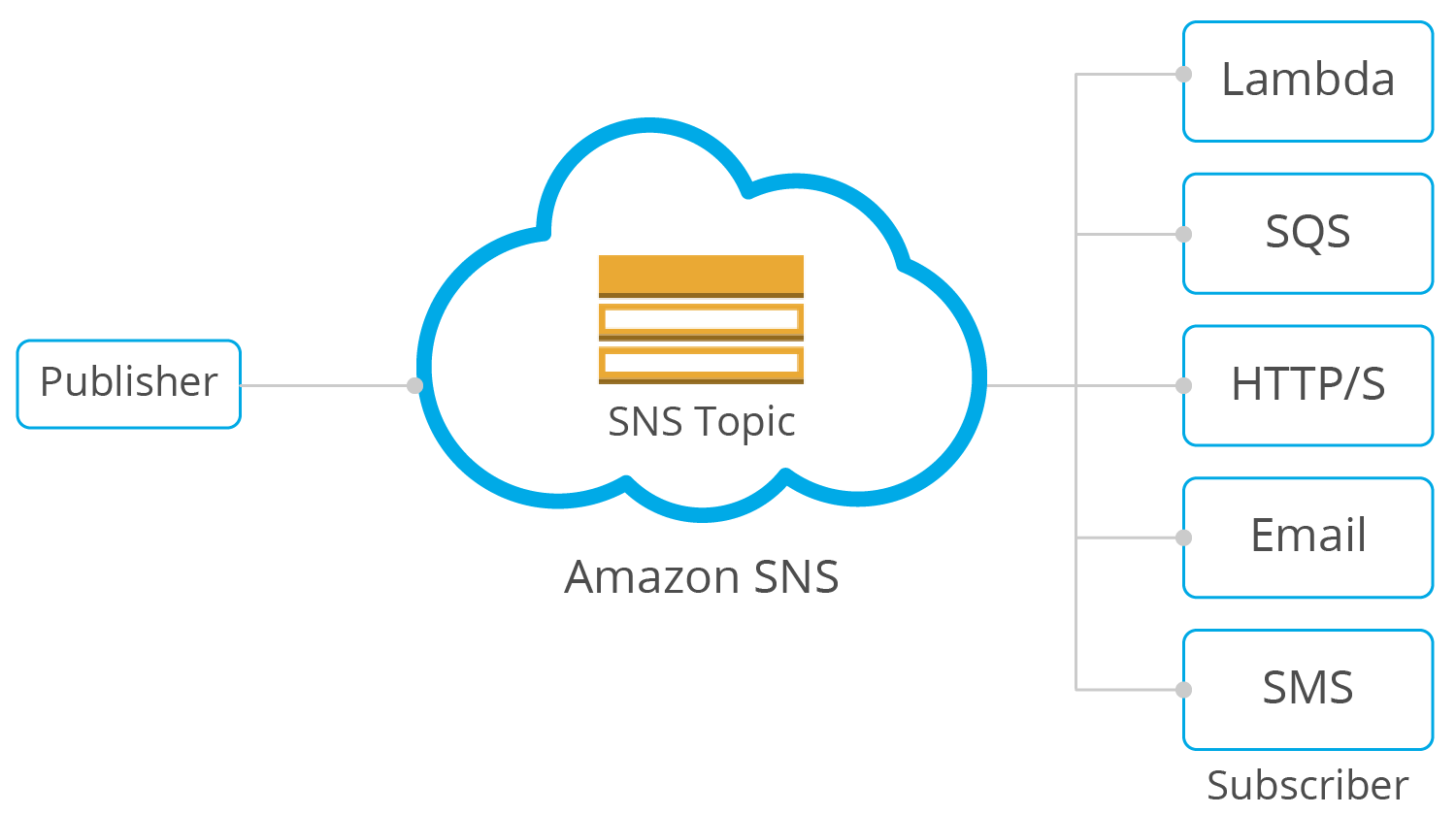AWS Simple Notification Service (SNS-Push Notification Service): A Comprehensive Guide to AWS's Communication Powerhouse
 Saurabh Adhau
Saurabh AdhauTable of contents

Introduction
In the ever-evolving world of cloud computing, efficient and reliable communication is paramount. Amazon Simple Notification Service (SNS) emerges as a game-changer, offering a robust and scalable messaging solution for developers and enterprises alike. This article will delve into the intricacies of SNS, shedding light on its capabilities, benefits, and inner workings.
Understanding SNS: A Messaging Marvel
At its core, SNS is a managed pub/sub-messaging service that facilitates communication between various components within your AWS infrastructure and beyond. It acts as a central hub, enabling publishers to send messages (notifications) to a diverse range of subscribers, including:
AWS services: Amazon SQS, Lambda, EC2 instances, etc.
HTTP/HTTPS endpoints: Websites, web applications, etc.
Mobile devices: iOS and Android applications via push notifications.
Email addresses: Users, teams, etc.

Unveiling the Benefits: Why Choose SNS?
Scalability: SNS scales seamlessly to accommodate massive volumes of messages, ensuring reliable delivery even during peak loads.
Decoupling: SNS decouples senders from receivers, enabling applications to focus on their core functionalities without worrying about message delivery specifics.
Flexibility: SNS supports a multitude of protocols and endpoints, offering unparalleled flexibility and integration capabilities.
Cost-effectiveness: Pay-as-you-go pricing ensures cost efficiency, allowing you to only pay for the resources you utilize.
Reliability: SNS delivers messages with high reliability, guaranteeing that critical notifications reach their intended recipients.
Security: SNS encrypts messages at rest and in transit, safeguarding sensitive information.
Delving Deeper: How Does SNS Work?
The core of SNS revolves around the concept of topics and subscriptions.
Topics: Represent communication channels where publishers send messages.
Subscriptions: Associations between a topic and an endpoint that desires to receive messages from that topic.
When a publisher sends a message to a topic, SNS delivers it to all subscribed endpoints. This allows for efficient communication with multiple recipients simultaneously.
As mentioned earlier, AWS SNS sends messages to its endpoints using the Publisher-Subscriber paradigm. You can use Amazon SNS to filter messages for a larger number of subscribers or endpoints through mobile communications, SMS, and email.
Publishers, also known as producers, create and send messages to AWS SNS.
On the other hand, subscribers receive messages published by the SNS using supported network protocols such as Amazon SQS, AWS Lambda, or HTTP/HTTPS.
Below are the exact stages of the workflow that AWS SNS implements:
The publisher first sends the required notifications to the subscribers.
SNS Topic – Used to filter out messages that need to be distributed to different subscribers. As an AWS developer, you must create an SNS topic that will serve as a subscriber access point. Subscribers can receive news alerts on a selected topic using a topic.
The message is delivered to the subscriber via subscriber queues or microservices. To receive a message, subscribers must submit valuable information such as a URL, email address, or phone number. Below are some of the most common forms of SNS messages:
Automatic user alerts triggered by predefined thresholds and sent to specific users via SMS or email are known as application and system alerts.
Push email or text messages are two ways to communicate with people or groups (for example, news article alerts sent to newspaper subscribers).
Mobile push notifications are messages sent directly to mobile applications (for example, notification of any application update available for installation).
How does Amazon SNS Message Filtering Work?
How Amazon SNS uses message filtering to deliver only a subset of SNS topic messages to subscriber endpoints. For example, consider a company website that sends user queries to many backend servers.

This server network consists of:
First, 1 server to handle requests from “Type 1” users.
Second, 1 server to handle “type 2” user requests.
1 data analysis server handles both “Type 1” and “Type 2” user requests.
Following are the six stages of implementing message filtering with Amazon SNS:
Create an Amazon SNS topic
The first step is to set up an Amazon SNS topic to send messages whenever a user requests the site.
Use the “AWS Services” search box to find the Amazon SNS console.
Click “Get Started with an Overview” on the SNS Console landing page, then click “Topics” from the left-hand menu.
Then, in the dialog box, click “Create Topic” and enter the name of your topic (“Topic 1”) in the “Topic Name” field (shown below).
To create and add a new topic to the “Topic” detail page, click “Create Topic” in the dialog box above.
Protocols and Endpoints: Connecting the Dots
SNS supports a diverse range of protocols for message delivery:
HTTP/HTTPS: For communication with web applications and APIs.
Amazon SQS: For queuing messages for asynchronous processing.
SMS: For sending text messages to mobile devices.
Email: For sending email notifications.
Mobile Push: For sending push notifications to iOS and Android devices.
AWS Lambda: For triggering Lambda functions upon receiving a message.
This vast array of protocols ensures seamless integration with various applications and services.
Components of SNS: A closer look
Topics: As discussed earlier, topics act as communication channels for publishers and subscribers.
Subscriptions: Establish the connection between a topic and a specific endpoint.
Messages: Information delivered from publishers to subscribers.
Policies: Control access to topics and define message delivery behavior.
Fanout: Enables a single message to be delivered to multiple subscribers simultaneously.
Delivery Status Tracking: Provides insights into message delivery status, ensuring transparency and reliability.
Conclusion: SNS as Your Communication Champion
With its impressive features, flexibility, and affordability, SNS stands as a powerful communication tool within the AWS ecosystem. Whether you're building microservices architectures, notifying users of critical events, or triggering server-side workflows, SNS empowers you to achieve robust and reliable communication at scale.
By leveraging SNS, you can improve your application's efficiency, streamline workflows, and ultimately enhance your user experience. So, embrace the power of SNS and unlock a world of seamless communication possibilities within the AWS cloud.
Subscribe to my newsletter
Read articles from Saurabh Adhau directly inside your inbox. Subscribe to the newsletter, and don't miss out.
Written by

Saurabh Adhau
Saurabh Adhau
As a DevOps Engineer, I thrive in the cloud and command a vast arsenal of tools and technologies: ☁️ AWS and Azure Cloud: Where the sky is the limit, I ensure applications soar. 🔨 DevOps Toolbelt: Git, GitHub, GitLab – I master them all for smooth development workflows. 🧱 Infrastructure as Code: Terraform and Ansible sculpt infrastructure like a masterpiece. 🐳 Containerization: With Docker, I package applications for effortless deployment. 🚀 Orchestration: Kubernetes conducts my application symphonies. 🌐 Web Servers: Nginx and Apache, my trusted gatekeepers of the web.